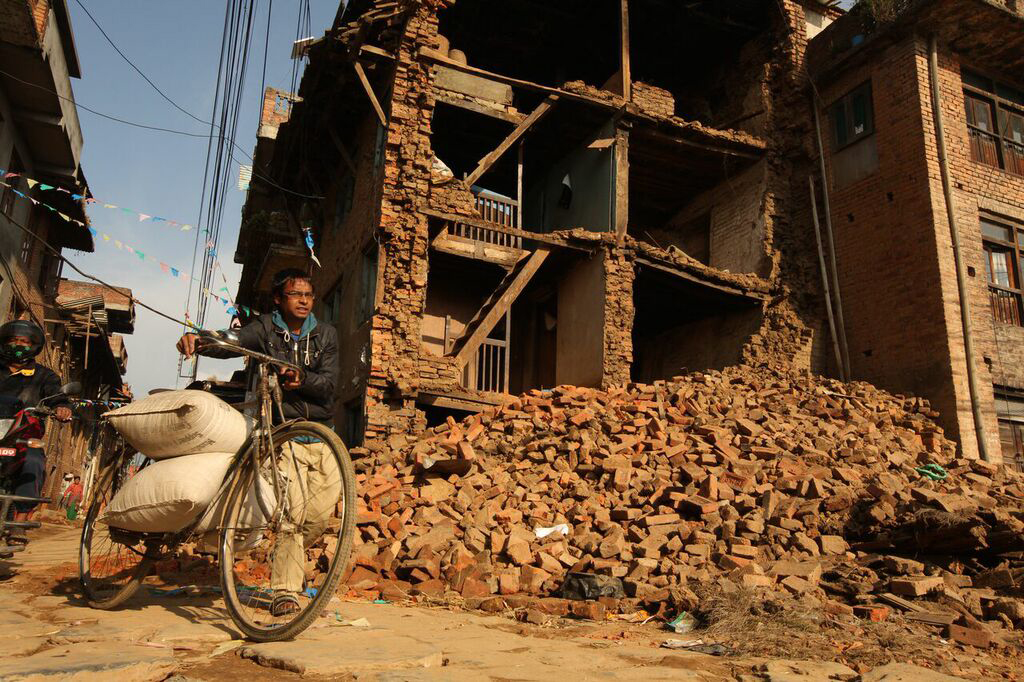
NOTE TO READERS: A powerful new earthquake shook Nepal May 12, sending thousands rushing to the streets as more buildings collapsed. The 7.3-magnitude earthquake came 17 days after the 7.8-magnitude quake that struck April 25, killing more than 8,000 people and destroying hundreds of thousands of homes. The new quake will add to the dismal statistics as rescue workers, including Southern Baptist relief teams, once again begin digging out.
RICHMOND, Va. (BP) — Nepalis had begun the long struggle to dig out of the rubble left by the 7.8-magnitude earthquake April 25 that has claimed more than 8,000 lives and destroyed parts of Kathmandu, Nepal’s capital city. Then came another quake today (May 12), at 7.3-magnitude.
 It’s becoming clear that the quake on April 25 did even greater damage in rural areas, where Southern Baptist relief workers and their Nepali Christian partners are focusing aid efforts.
It’s becoming clear that the quake on April 25 did even greater damage in rural areas, where Southern Baptist relief workers and their Nepali Christian partners are focusing aid efforts.
But the death and destruction in Kathmandu highlight the enormous physical challenges confronting many Asian cities.
“With an annual population growth rate of 6.5 percent and one of the highest urban densities in the world, the 1.5 million people living in the Kathmandu Valley [another estimate puts the population at 2.5 million] were clearly facing a serious and growing earthquake risk,” according to a report issued by a group of seismologists who visited Kathmandu a week before the April 25 temblor. “It was also clear that the next large earthquake to strike near the Valley would cause significantly greater loss of life, structural damage, and economic hardship than past earthquakes had inflicted.”
Why? Too many people crowded into too little space — in this case, a quake-prone urban area — living in old, crumbling buildings or in flimsy structures thrown together to house people arriving daily in search of jobs and a better life.
“Earthquakes don’t kill people; buildings kill people” is a common saying among seismologists. The more people living in inadequate housing, the more potential casualties. “You’re up against a Himalayan-scale problem with Third-World resources,” geologist Susan Hough told the Washington Post.
But the rapidly expanding megacities of South Asia face even greater challenges than earthquakes. The region already encompasses 12 of the world’s 50 largest urban centers. They need more food, water, jobs, housing and infrastructure for the millions streaming in from rural areas. Most of all, they need the hope found only in Jesus Christ.
“By 2020, India alone will have a shortage of 30 million housing units in big cities,” says Daren Cantwell*, strategy leader for South Asian peoples with the International Mission Board. “By 2030 they’re expecting 350 million more Indians to move to cities. By 2050, they expect 700 million to move to cities. The challenge for these cities to provide water, food and sanitation is huge. With this many people coming in, a city can’t assimilate fast enough. So you have these huge slums grow up — like in Mumbai, where you have 10 million people living in slums.”
Yet Mumbai, with a metro population of more than 20 million, also boasts legions of middle-class workers and the most billionaires in India. It’s the pulsating heart of India’s financial, cultural and entertainment worlds.
“Our focus on cities will be at multiple levels of society, from the slum dwellers to the people living in high-rises to doctors, lawyers, Bollywood [India’s film industry], the whole gamut,” Cantwell says. “Finding the best places to work, the best ways to work and to multiply yourself through your national partners across a city are all things we’re dealing with as we seek strategies to reach these places.”
They’re looking for U.S. partners, too, as IMB focuses more intensively on extending the Gospel in and through the world’s cities. On a global scale, urban dwellers will double to 6.4 billion by the middle of this century — 70 percent of the projected human population — according to a United Nations forecast.
“There are massive needs in cities around the world,” IMB President David Platt says. “How do we take this God-ordained movement of people toward cities, leverage what God is doing and intentionally go to cities, so we’ve got relationships when people get there? They’ve come in search of economic help or prosperity. We hope they’ll find what they need for daily life, but find in a greater way what they need for eternal life. We want to be there, ready with the Gospel.”
*Name changed.
















